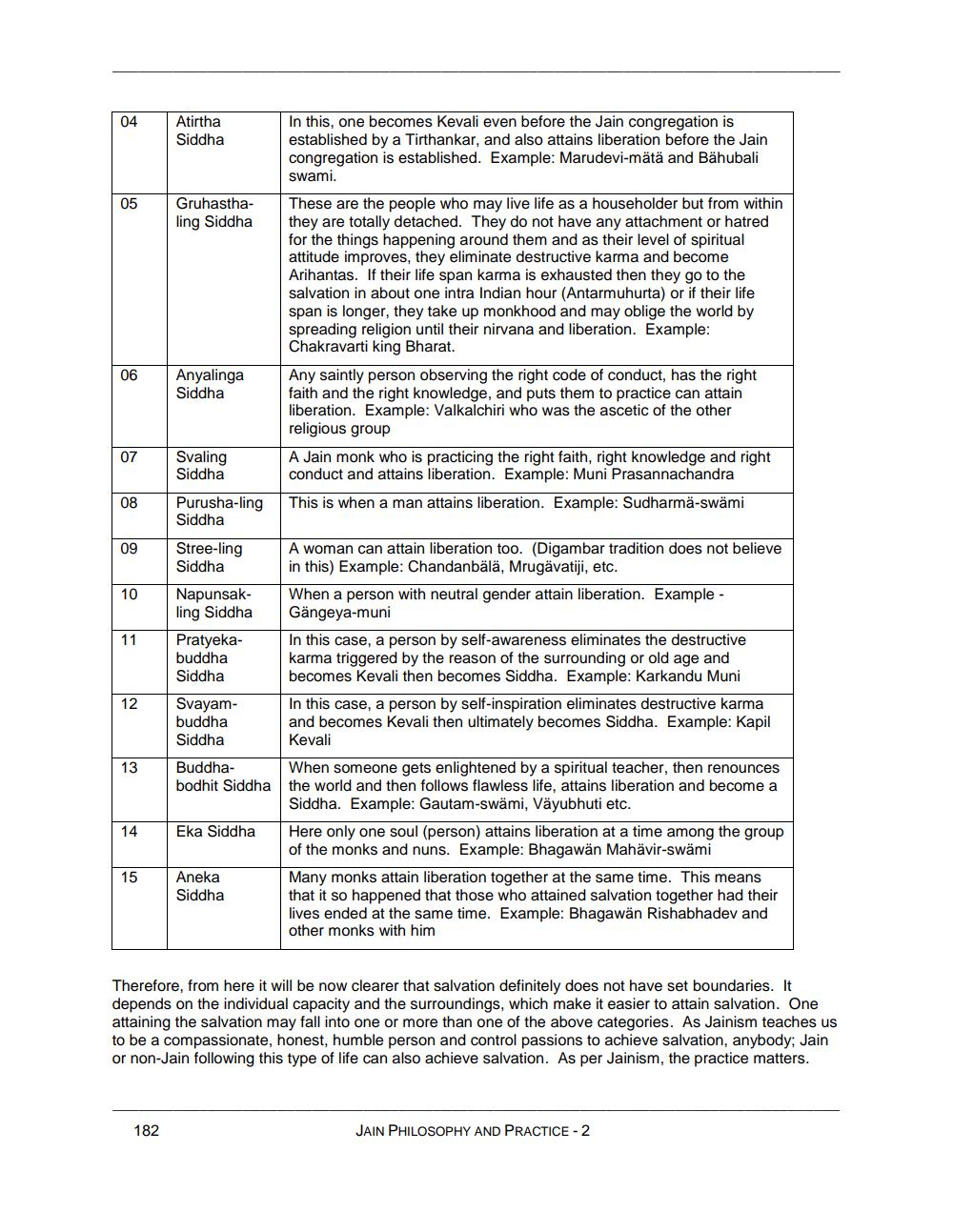________________
04
05
06
07
08
09
10
11
12
13
14
15
Atirtha Siddha
182
Gruhasthaling Siddha
Anyalinga Siddha
Svaling Siddha
Purusha-ling Siddha
Stree-ling Siddha
Napunsakling Siddha
Pratyekabuddha
Siddha
Svayambuddha
Siddha
Buddhabodhit Siddha
Eka Siddha
Aneka Siddha
In this, one becomes Kevali even before the Jain congregation is established by a Tirthankar, and also attains liberation before the Jain congregation is established. Example: Marudevi-mätä and Bähubali swami.
These are the people who may live life as a householder but from within they are totally detached. They do not have any attachment or hatred for the things happening around them and as their level of spiritual attitude improves, they eliminate destructive karma and become Arihantas. If their life span karma is exhausted then they go to the salvation in about one intra Indian hour (Antarmuhurta) or if their life span is longer, they take up monkhood and may oblige the world by spreading religion until their nirvana and liberation. Example: Chakravarti king Bharat.
Any saintly person observing the right code of conduct, has the right faith and the right knowledge, and puts them to practice can attain liberation. Example: Valkalchiri who was the ascetic of the other religious group
A Jain monk who is practicing the right faith, right knowledge and right conduct and attains liberation. Example: Muni Prasannachandra
This is when a man attains liberation. Example: Sudharmä-swämi
A woman can attain liberation too. (Digambar tradition does not believe in this) Example: Chandanbälä, Mrugävatiji, etc.
When a person with neutral gender attain liberation. Example - Gängeya-muni
In this case, a person by self-awareness eliminates the destructive karma triggered by the reason of the surrounding or old age and becomes Kevali then becomes Siddha. Example: Karkandu Muni
In this case, a person by self-inspiration eliminates destructive karma and becomes Kevali then ultimately becomes Siddha. Example: Kapil Kevali
When someone gets enlightened by a spiritual teacher, then renounces the world and then follows flawless life, attains liberation and become a Siddha. Example: Gautam-swämi, Väyubhuti etc.
Here only one soul (person) attains liberation at a time among the group of the monks and nuns. Example: Bhagawän Mahävir-swämi
Many monks attain liberation together at the same time. This means that it so happened that those who attained salvation together had their lives ended at the same time. Example: Bhagawän Rishabhadev and other monks with him
Therefore, from here it will be now clearer that salvation definitely does not have set boundaries. It depends on the individual capacity and the surroundings, which make it easier to attain salvation. One attaining the salvation may fall into one or more than one of the above categories. As Jainism teaches us to be a compassionate, honest, humble person and control passions to achieve salvation, anybody; Jain or non-Jain following this type of life can also achieve salvation. As per Jainism, the practice matters.
JAIN PHILOSOPHY AND PRACTICE - 2




